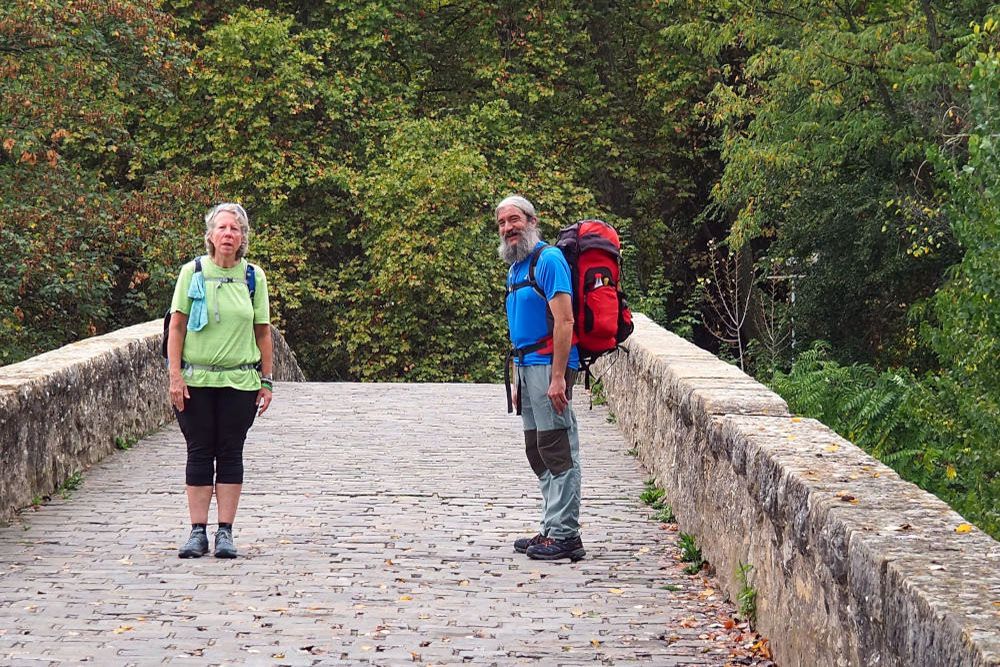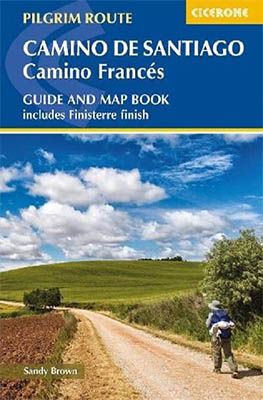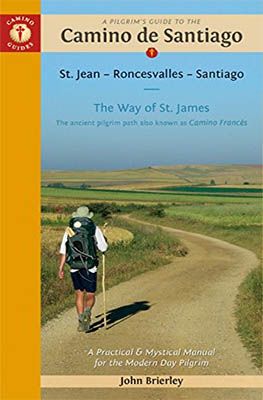Santiago de Compostela has been a pilgrimage destination for pilgrims from all over the world since the discovery of the Apostle Jacob’s tomb. The city is the most important place for Christian believers after Rome and Jerusalem. From all over Europe, the St Jacob’s Way routes lead to Santiago. The most famous one, however, is the Camino Francés, the French Way. For more than 1,000 years, pilgrims from all over the world have walked this route. Like us, they no doubt enjoyed the many sights along the Camino Francés.
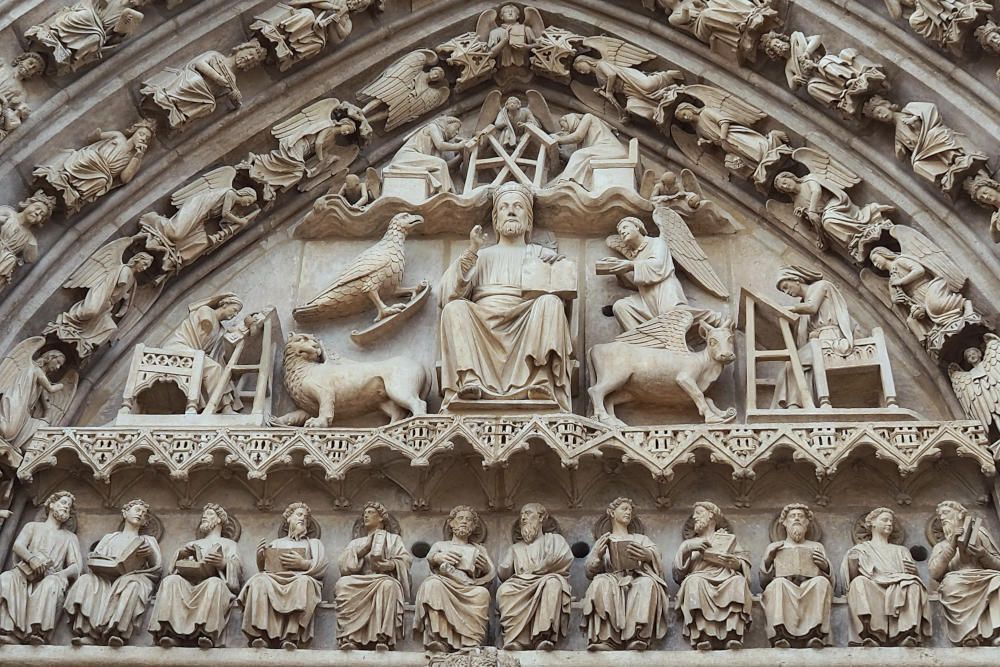
The Camino Francés from the Somport Pass
You can start the Camino Francés at two different places. We do so at the Somport Pass. This pass in Spain forms the natural border with France. Another option is to start at St Jean Pied de Port. This starting point is in France. Pilgrims starting the Camino Francés there face a tough stretch right away: they have to cross the Pyrenees. So we describe the sights along the Camino Francés from Somport and end this blog in Burgos. In the second blog, we pick up the route there again. Eventually, we will reach our final destination: Santiago de Compostela.
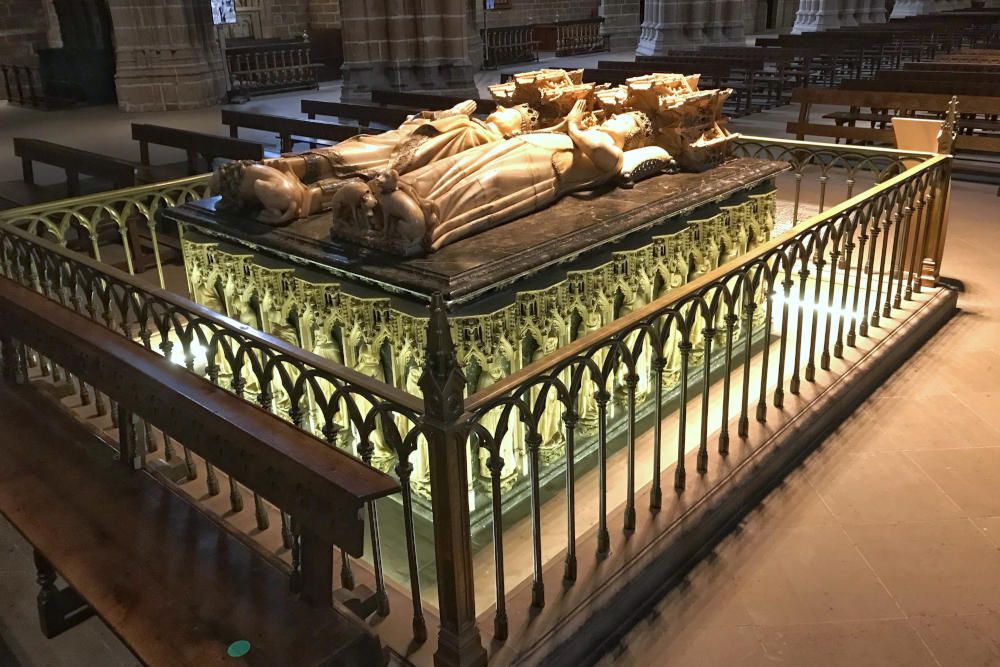
Sights along the Camino Francés
Walking the Camino Francés is an experience in itself. Every pilgrim has a personal reason for making the trek. Some do it for reflection or spiritual reasons, others to get some clarity with themselves. Some do it to distance themselves from everyday worries. We met someone who had recently lost his job. To make matters worse, his wife had left him for someone else soon after. By walking the Camino Francés, he hoped to cope with both events. But there are also plenty of people who do the trek because they enjoy walking. To enjoy other cultures, history and beautiful landscapes this way.
You will come across beautiful sights along the Camino Francés. Too many to list them all one by one. We’ll highlight the most special ones that you should definitely take time for. Ideal to give your feet a well-deserved rest!
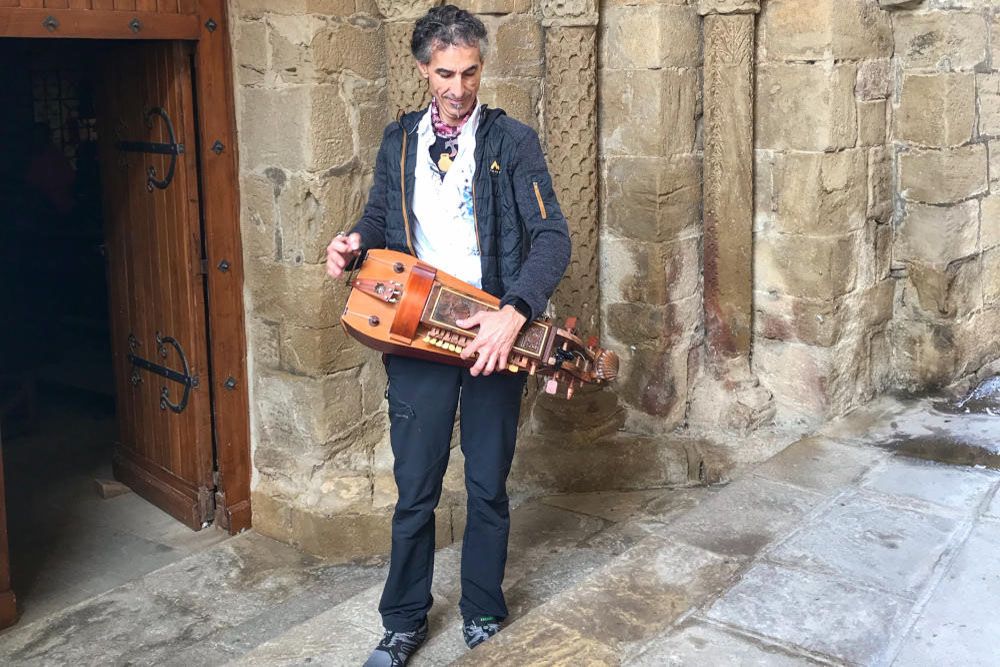
Hospital de Santa Cristina
Now all you see there is a ruin in a mountainous and desolate landscape. But once this was the first shelter encountered by weary pilgrims in Spain. They had completed the arduous crossing over the high peaks of the Pyrenees. At the Hospital de Santa Cristina, they could catch their breath for three days. They were given free food and heated accommodation. This inn was one of the first to be built along the Camino Francés. It is estimated to date back to the 11th century.
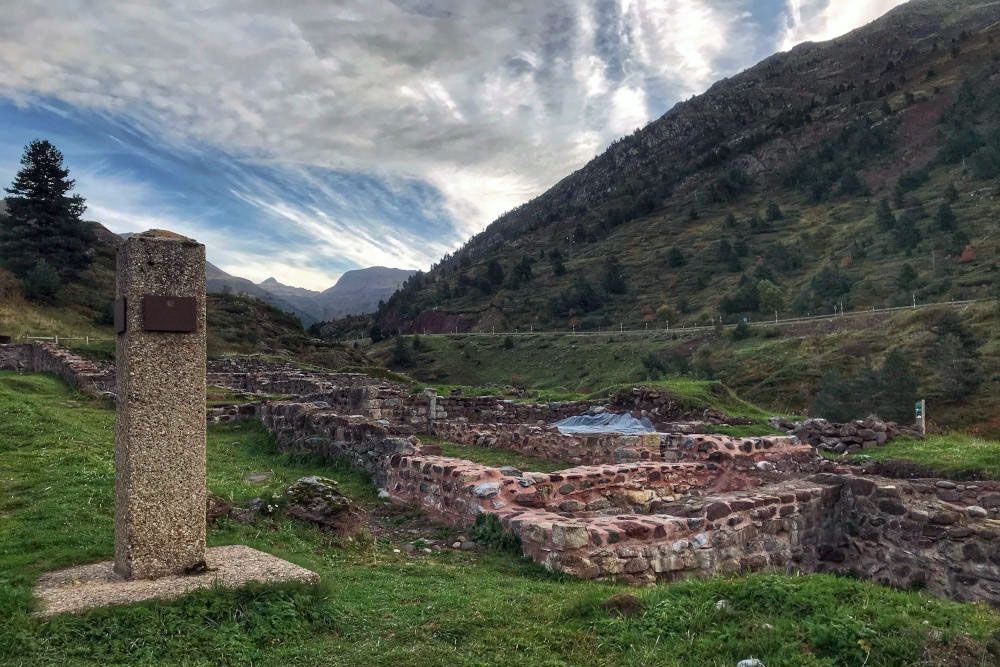
Canfranc railway station
The valley of Canfranc is one of the main routes through the Spanish Pyrenees. At the end of the valley stands the former Canfranc railway station. It was built in 1928. It is a prime example of the industrial architecture of the period. The dilapidated station is now being transformed into a luxurious five-star hotel. No doubt not accommodation where pilgrims will soon be staying.
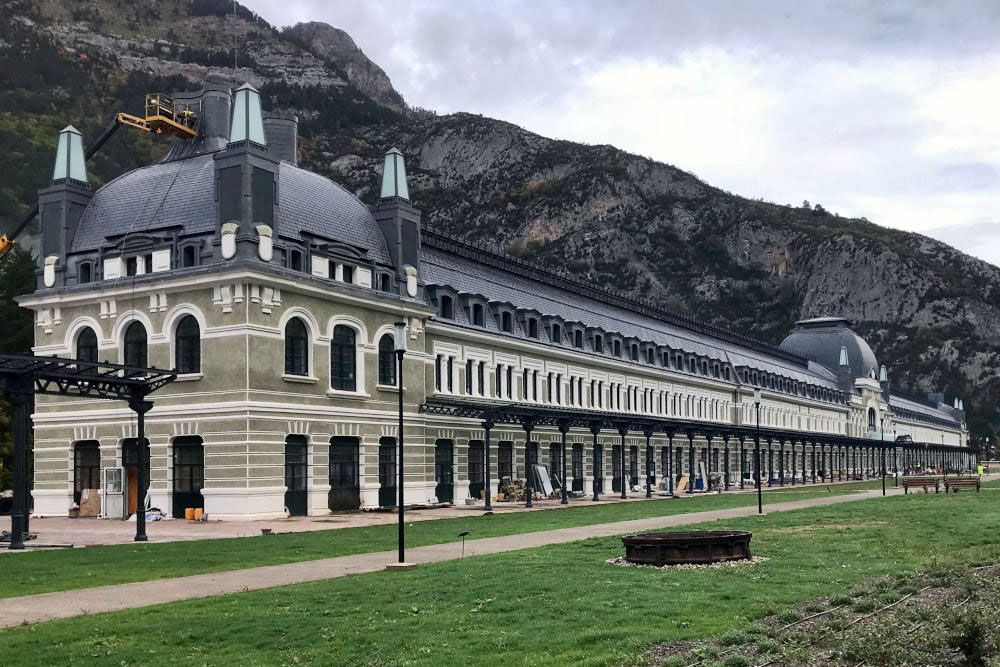
Jaca, the first Roman city in Spain
Jaca was the first capital city founded in Spain by the Romans. It is not too big a city with a compact centre, definitely worth exploring. Two sights stand out as far as we are concerned.
Firstly, the first Romanesque cathedral, built in the 11th century. In the 15th century, the church was given small chapels along the sides. In them are beautiful works of art. You will admire many Romanesque paintings, special altarpieces and many silver and gold objects. Another highlight is the citadel, just outside the city. The defensive work dates from the 16th century. The Ciudadela is an impressive complex, including a special museum and beautiful halls with exhibitions.
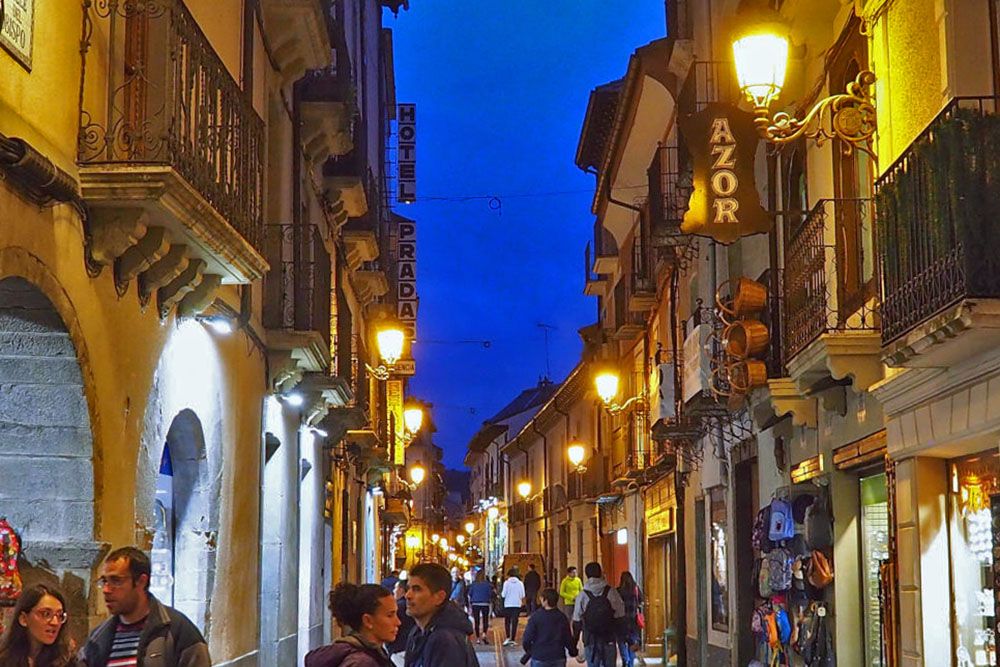
Monastery of San Juan de la Peña
Not far from Jaca, the Monastery of San Juan de la Peña is located in the mountains. Its location is unusual: carved out of a rock that hangs over it, so to speak. In the Middle Ages, this was the most important monastery in Aragon. Kings were buried here. As far as we are concerned, the highlight is the cloister. Although the Romanesque colonnade is all that remains of it, a tour always stays with you. The upper part of each column beautifully depicts a biblical story. Useful for the many believers who were illiterate in the Middle Ages. This way they still got the stories from the Bible. At the monastery, you also enjoy fantastic views of the region. The monastery is one of the special sights along the Camino Francés that you should definitely visit.
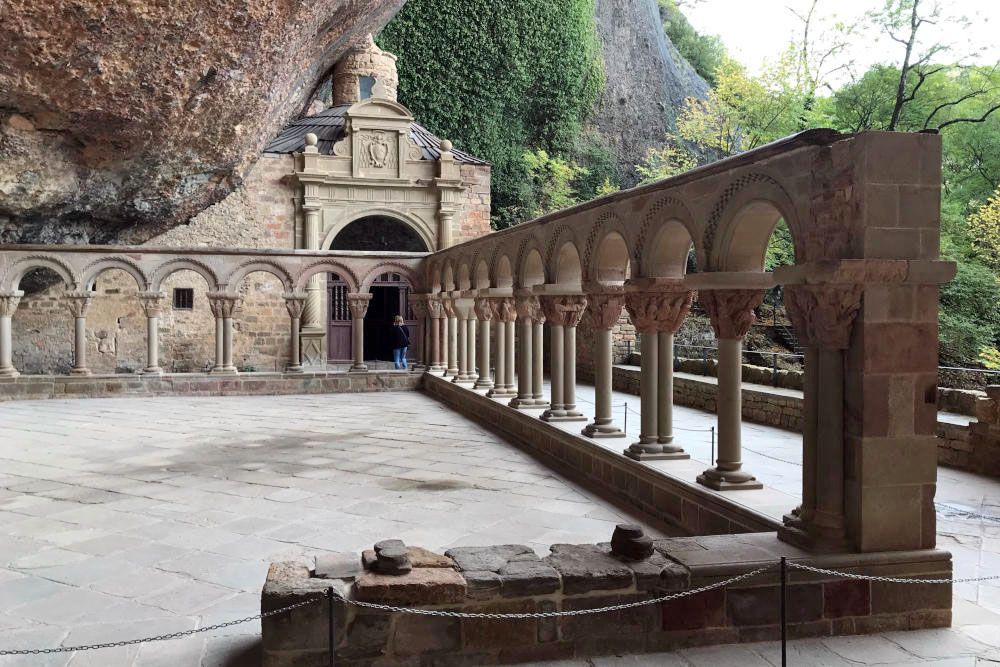
Gregorian chanting at the Monastery of Leyre
The Monastery of Leyre is located at the foot of the Pyrenees, above the Aragon valley. Its location is magnificent, with the rocky Sierra de Leyre in the background. The complex is said to have been founded by Benedictine monks as early as the 9th century. It is an imposing building, with the crypt and the church as particular highlights.
But the most impressive thing to experience is the Gregorian chanting. Every evening at seven o’clock, the Benedictine monks gather in the church. They then sing various Gregorian chants. It is an experience to be present at this. Today, part of the monastery is a luxurious hotel. A great contrast to the austere living conditions of the Benedictine monks.
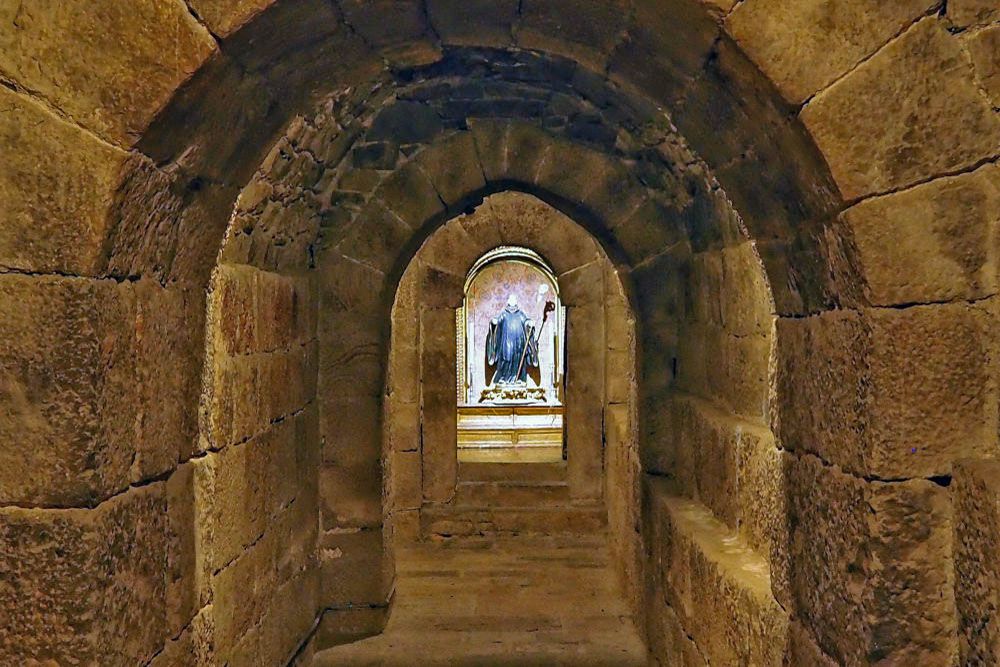
Enjoying Pamplona
The first big city on the Camino Francés is Pamplona. We knew the city only from annual bull runs through the city centre. But during our visit, the streets were happily filled only with locals, pilgrims and tourists. Pamplona stole our hearts. You can easily have a great time there for two or three days, as there are plenty of sights to see. For that reason, we will make an extensive blog about Pamplona later.
The cathedral, in particular, is impressive. Don’t let the somewhat dull façade on the outside fool you. Once inside, you will be staring for ages to admire all the works of art in this beautiful gothic church.
There is no better place than Café Iruña to grab some food and drink in Pamplona. This was once the favourite café of writer Ernest Hemingway. His effigy stands prominently in the establishment. The interior has hardly changed after his death. A walk along the city’s ramparts yields magnificent views. Especially at the Redin Bastion, the panorama is magnificent.
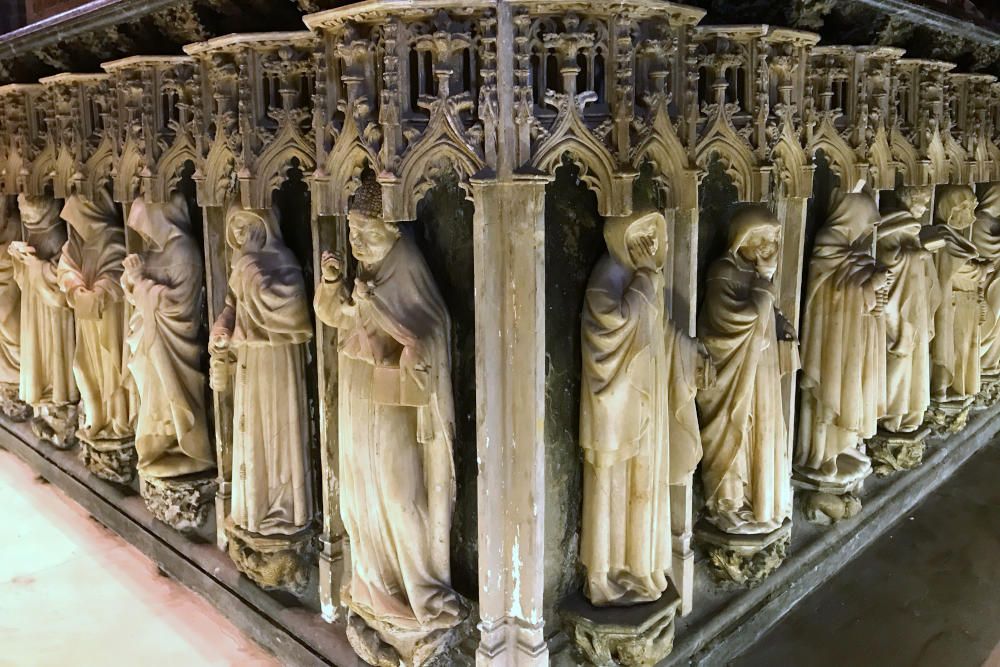
Santa Maria de Eunate
Only just recovered from the beauty of Pamplona, we reach another of the many impressive sights along the Camino Francés. That is Santa Maria de Eunate, a magnificent Romanesque church. Its location is already special: lonely and deserted in the open and wide plain, the monument from 1170 stands shining in the sun.
Much about the origins of this church is shrouded in mystery. It is not clear who built the church and why it stands on this spot. The octagonal shape of the church is special. But the interior of the church is also beautiful, mainly because of its simplicity. The church stands in a photogenic spot. During our visit, a large group of Spanish cyclists passes by. Of course, a group photo has to be taken in front of Santa Maria de Eunate.
The church is located near Puente la Reina. In this small town, two routes of the Camino Francés meet. From this town, the St Jacob’s Way takes the same route. Via the beautiful pilgrims’ bridge, walkers leave Puente la Reina. Before we cross the bridge, we hear music in a small church. In the dark, a troubadour sings, accompanying himself on a lute. He continues the medieval tradition of singing in churches along the caminos. A little later he walks out and picks up a special instrument, a hurdy-gurdy. On this he plays another song. Then he walks back into the church to continue playing there.
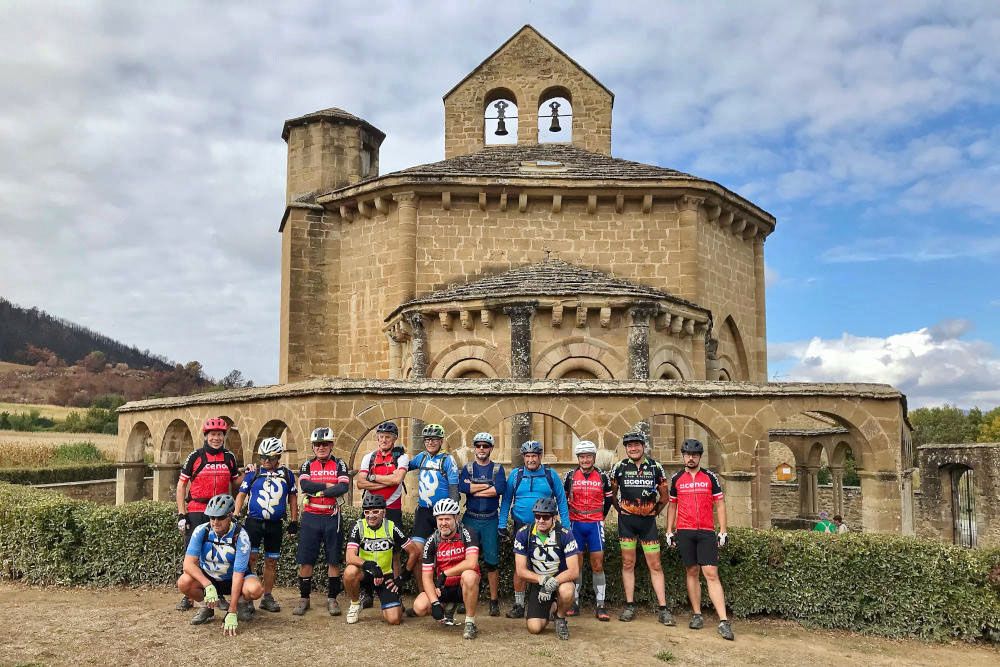
Wine and tapas in Logroño
Next, we get to Logroño. This is the wine capital of Rioja, one of Spain’s most famous wine regions. Logroño is ideal for a slightly longer stopover for several other reasons, too. On the right bank of the Ebro lies the city’s old town. Santa María de la Redonda cathedral on the Plaza del Mercado is the main attraction, also thanks to its distinctive two bell towers. In addition, the decoration of the high portal is special.
Calle Laurel and surrounding streets are crowded at night. This is where locals dine on delicious tapas and wines at the more than 70 tapas bars. The local speciality is stuffed mushrooms. We thoroughly enjoy these tapas, accompanied by a chilled glass of white wine. The owner tells us he prepares more than 70 kilograms of these tapas in one evening. What makes these tapas so special? He smiles and says: “I won’t tell you that, the recipe is our secret!”
During the day, you can visit the bodegas in Logroño and the Museo de la Rioja, located in an old palace. In mid-September, the wine festivals take place in Logroño. This is a great festival to experience, also because of the traditional dances that are performed then.
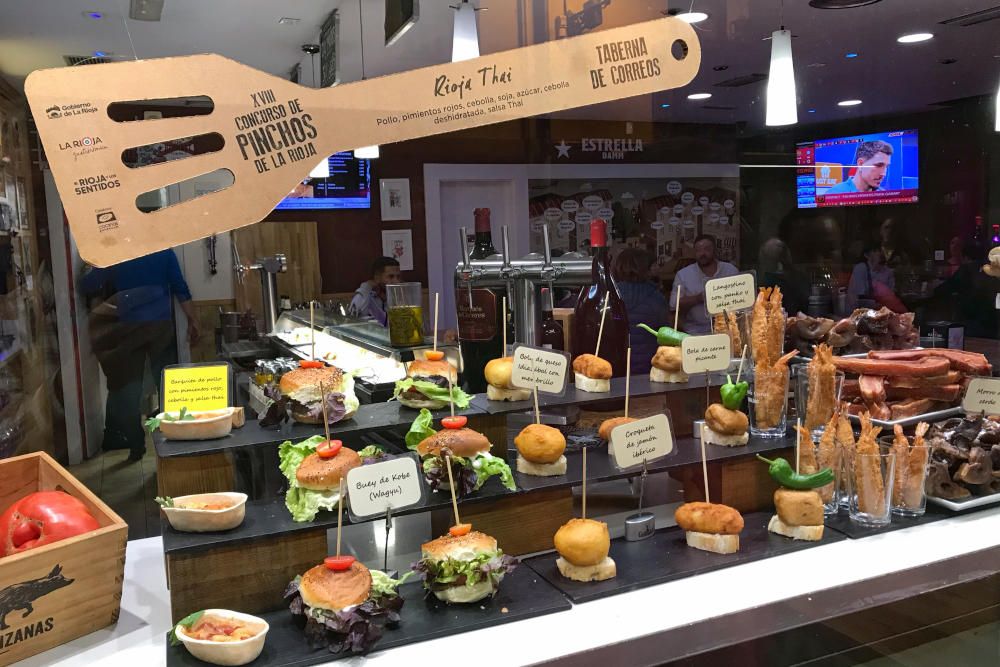
Burgos, the city of El Cid
In the Castile and Leon region, the cosy city of Burgos is one of the biggest cities. Beautifully situated on a plateau, on the banks of the river Arlanzón. You will come across several effigies of El Cid in this city. This Spanish knight from the 11th century has numerous heroic deeds to his name. That’s why he became a national hero. His birthplace was in a village near Burgos.
Burgos’ mighty cathedral with 15 chapels is impressive. Hence, the city has attracted many pilgrims for centuries. But Burgos has more highlights. The old town has a maze of cosy streets, alleys and squares. The Plaza Mayor, next to the cathedral, is the city’s main square. The city gate Arco de Santa Maria is a former triumphal arch. On it are images of the most important people in Burgos’ history. Therefore, it is definitely worth spending some more time in the city. In a separate blog about Burgos, we will go into more detail about Burgos’ many attractions.
Are you curious about other sights along the Camino Francés? Shortly, we will continue the route to the final destination: the cathedral of Santiago de Compostela.
At the invitation of the Spanish Tourist Board, we visited the sights along the Camino Francés. We compiled the content of the blog independently and objectively based on our own impressions.
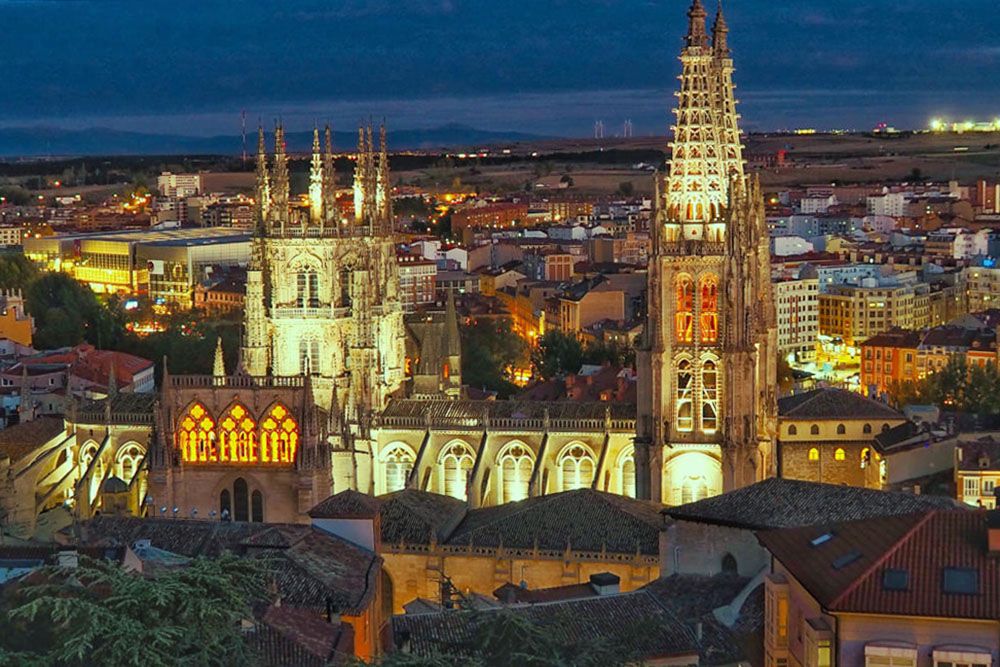
This is what you want to know about the sights along the Camino Francés
The total route is almost 800 kilometres long if you start at the Somport Pass.
There are two starting points of the Camino Francés. You can start, as we describe in this blog, at the Somport Pass in northern Spain. The Somport Pass is near the border with France. Another option is to start at St Jean Pied de Port. This starting point is in France. Pilgrims starting there on the Camino Francés face a tough stretch right away: they have to cross the Pyrenees. Both routes meet in Puente de Reina and then jointly continue the way to Santiago de Compostela.
Officially, the route is split into over 30 stages. But you can of course choose to walk more or fewer kilometres in a day. This way, you can adjust the number of stages to your own walking pace.
Yes, the route is clearly marked with a yellow shell on a blue background. The markings are so numerous and large that going wrong is actually impossible. And should that happen: any Spaniard you speak to will immediately point you in the right direction.
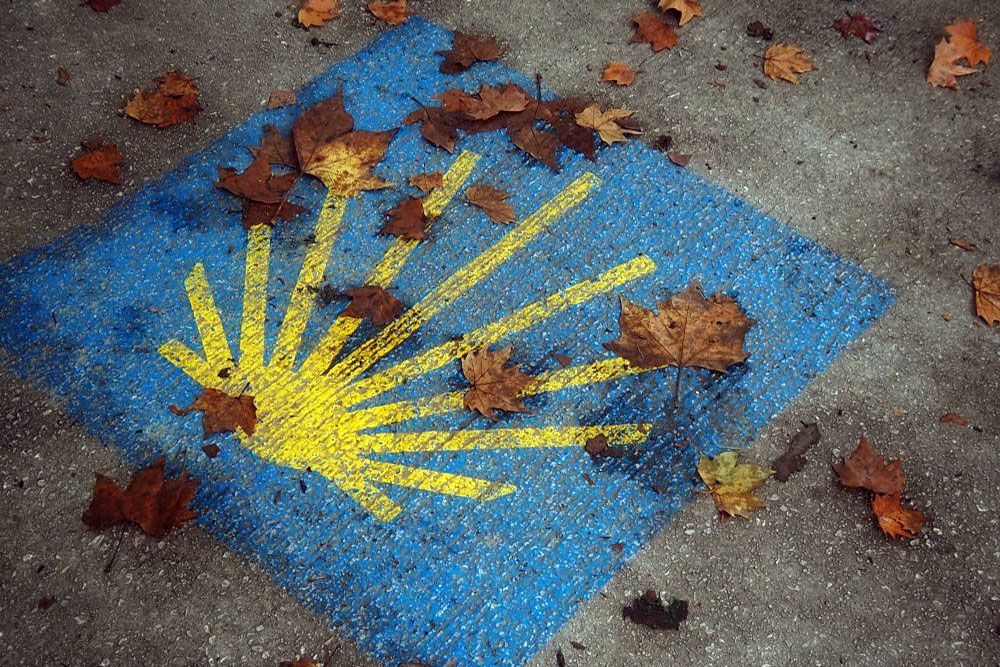
These are too many to mention. But definitely take your time to enjoy all the highlights along the way. We were very impressed by the monastery of San Juan de la Peña and the Gregorian chanting in the monastery in Leyre. But also the church of Santa Maria de Eunate, and the atmosphere and friendliness of the cities of Jaca, Pamplona, Logroño and Burgos. And, of course, the impressive cathedrals in Pamplona and Burgos, in particular. So, be sure to spend a few days touring the various places while walking the Camino Francés.
Spring and autumn in particular are ideal for walking the route. In July and August, it can be very hot along the way. Moreover, in August, many Spanish pilgrims are on the road. In winter, snow and cold can make the trek difficult.
It is estimated that around 300,000 pilgrims walk the Camino Francés every year. That number rises further in Holy Years to around 600,000 walkers (for an explanation of Holy Years: see the next question). Those seem immense numbers where you immediately think of walking the Four Days Marches. Realise, though, that the route is almost 800 kilometres long. Not everyone starts at the same time, so it does spread out well.
From Sarria, about 100 kilometres before Santiago de Compostela, it gets busier. This is because many walkers start the journey in this town. They then cover the minimum distance to qualify for the certificate of having completed the Camino.
When 25 July falls on a Sunday, it is called Año Xacobeo, or a Holy Year. This is when people commemorate the martyrdom of Jacob. This occurs 14 times in a century, according to a fixed schedule of 6-5-6-11 years. The last Holy Year was officially in 2021. That fell in the middle of Covid times. Therefore, the year was extended and 2022 was also a Holy Year. During a Holy Year, there are numerous festivities in the towns and villages along the Santiago roads. In Santiago de Compostela, pilgrims can enter the Cathedral through the Puerta Santa (holy door) during Holy Year. The next Holy Year will be in 2027.
Yes, more and more commercial companies are offering this option. Each party has its own conditions and rates. Be sure to check the internet for luggage transport providers.
Most pilgrims spend the night in so-called albergues. In big cities, these are large accommodations with up to 150 beds. In small villages, they are often small shelters with just 10 beds.
The number of donative albergues is gradually decreasing. Here, you decide what you give for shelter. The rule of thumb is that you give a minimum of €5. The municipal albergues are managed by the municipality. Accommodation here is slightly more expensive, but still cheap. There are fixed rates for an overnight stay in a municipal albergue. Most have dormitories, but it is often also possible to book private rooms. Finally, there are more and more private albergues. These have more luxury. They also often offer extra services. The prices of a private albergue are again a bit higher.
But of course, you can also opt for a commercial hotel, equipped with all the conveniences and complete privacy. That does make walking the St Jacob's Way a lot more expensive.
